9 Best Herbal Tinctures For Body Odor
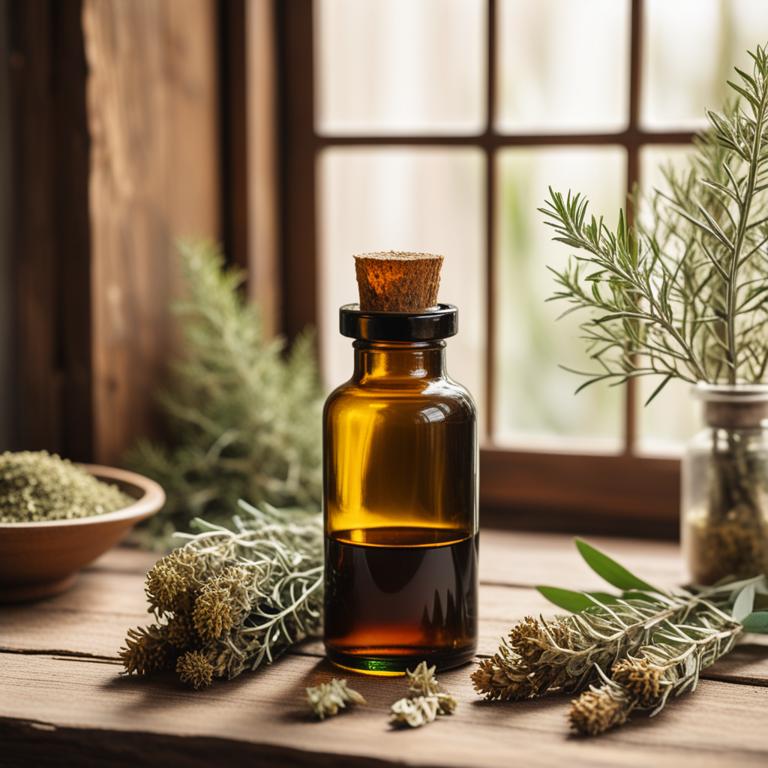
Herbal tinctures for body odor are highly concentrated liquid extracts made from plants and herbs that are used to treat excessive sweating and body odor.
These tinctures have numerous benefits, including their ability to reduce sweat production, eliminate bacteria that cause odor, and promote overall skin health.
Examples of herbal tinctures used to treat body odor include tea tree oil tincture, which has antibacterial properties that combat odor-causing bacteria, while lemongrass tincture is known for its deodorizing and antifungal properties.
Other herbal tinctures, such as neem, sage, and lavender, are also used to treat body odor due to their antiseptic and antifungal properties, which help to reduce sweat and eliminate bacteria that cause odor.
N/A
Below there's a list of the 9 best herbal tinctures for body odor.
- 1. Eucalyptus globulus tinctures
- 2. Pelargonium asperum tinctures
- 3. Melaleuca alternifolia tinctures
- 4. Cymbopogon citratus tinctures
- 5. Salvia officinalis tinctures
- 6. Rosmarinus officinalis tinctures
- 7. Syzygium aromaticum tinctures
- 8. Thymus serpyllum tinctures
- 9. Lavandula angustifolia tinctures
Also you may be interested in...
TODAY'S FREE BOUNDLE
Herb Drying Checklist + Herbal Tea Shopping List + Medicinal Herbs Flashcards
Enter you best email address below to receive this bundle (3 product valued $19.95) for FREE + exclusive access to The Aphotecary Letter.
$19.95 -> $0.00
1. Eucalyptus globulus tinctures

Eucalyptus globulus tinctures have been traditionally used to treat body odor due to their antimicrobial and antifungal properties, which help to eliminate bacteria and fungi that cause unpleasant odors.
The presence of bioactive constituents such as cineole, limonene, and alpha-pinene in eucalyptus globulus tinctures contributes to their ability to inhibit the growth of odor-causing microorganisms.
By reducing the population of these microorganisms, eucalyptus globulus tinctures help to alleviate body odor and promote a fresher, cleaner sensation.
The benefits of using eucalyptus globulus tinctures for body odor include their natural, non-toxic, and non-irritating properties, making them a safe and effective alternative to conventional treatments.
2. Pelargonium asperum tinctures

Pelargonium asperum tinctures have been traditionally used to treat body odor due to their antimicrobial and antifungal properties, which help to reduce the growth of bacteria and fungi that cause unpleasant odors.
The tincture of Pelargonium asperum is believed to help treat body odor by inhibiting the production of sweat and reducing the bacteria that break down sweat into compounds that cause odor.
The bioactive constituents of Pelargonium asperum tinctures, including geraniol and linalool, have been shown to possess antimicrobial properties that can help to combat the underlying causes of body odor.
The benefits of using Pelargonium asperum tinctures to treat body odor include reduced sweat and a decrease in the unpleasant odors associated with body odor, making it a natural and effective remedy for this common ailment.
3. Melaleuca alternifolia tinctures
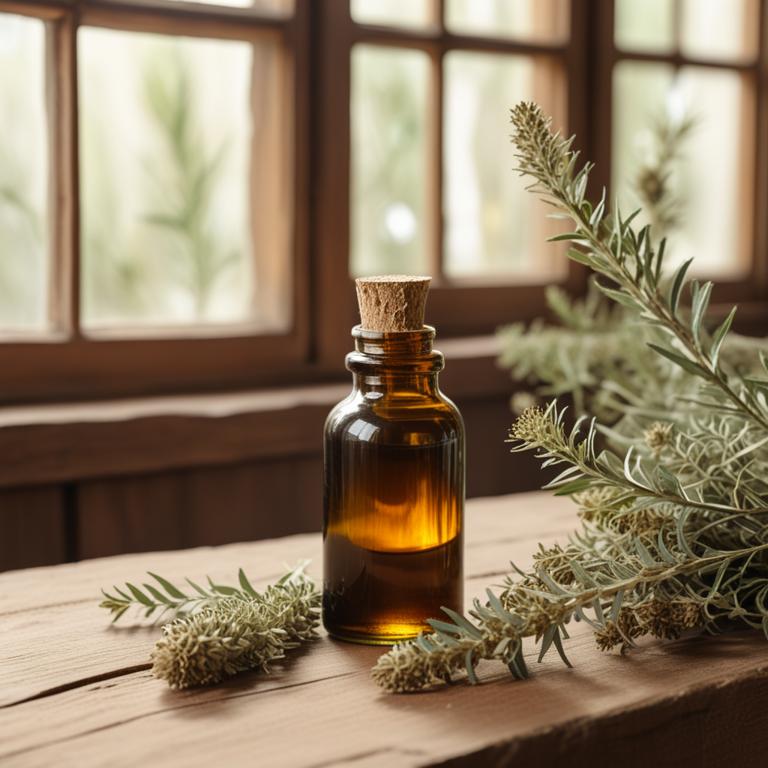
Melaleuca alternifolia tinctures have been traditionally used to treat body odor due to their antimicrobial and antifungal properties, which help to eliminate bacteria and fungi that cause bad smells.
The tannins and phenolic compounds present in this herbal preparation exhibit potent antibacterial activity, inhibiting the growth of odor-causing microorganisms on the skin.
By reducing bacterial loads on the skin, Melaleuca alternifolia tinctures can help to prevent excessive sweating and body odor, promoting overall skin health and hygiene.
The benefits of using Melaleuca alternifolia tinctures for body odor treatment include natural antiperspirant effects, reduced sweat smell, and soothing skin irritation.
4. Cymbopogon citratus tinctures
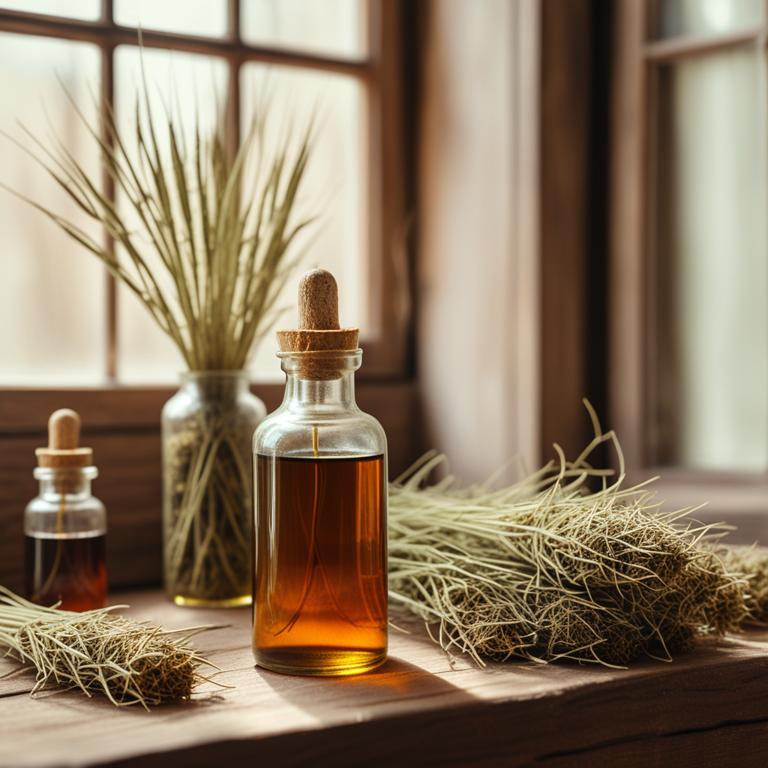
Cymbopogon citratus tinctures, derived from the leaves of the lemongrass plant, have been traditionally used to treat body odor due to its deodorizing and antimicrobial properties.
The bioactive constituents of Cymbopogon citratus, including citral, geraniol, and limonene, help to inhibit the growth of bacteria and fungi that contribute to body odor.
By reducing the microbial load and controlling the breakdown of sweat, Cymbopogon citratus tinctures can help to alleviate body odor and promote a fresher, cleaner sensation.
The benefits of using Cymbopogon citratus tinctures include a natural and non-irritating solution to body odor, making it an attractive alternative to chemical-based deodorants and antiperspirants.
5. Salvia officinalis tinctures
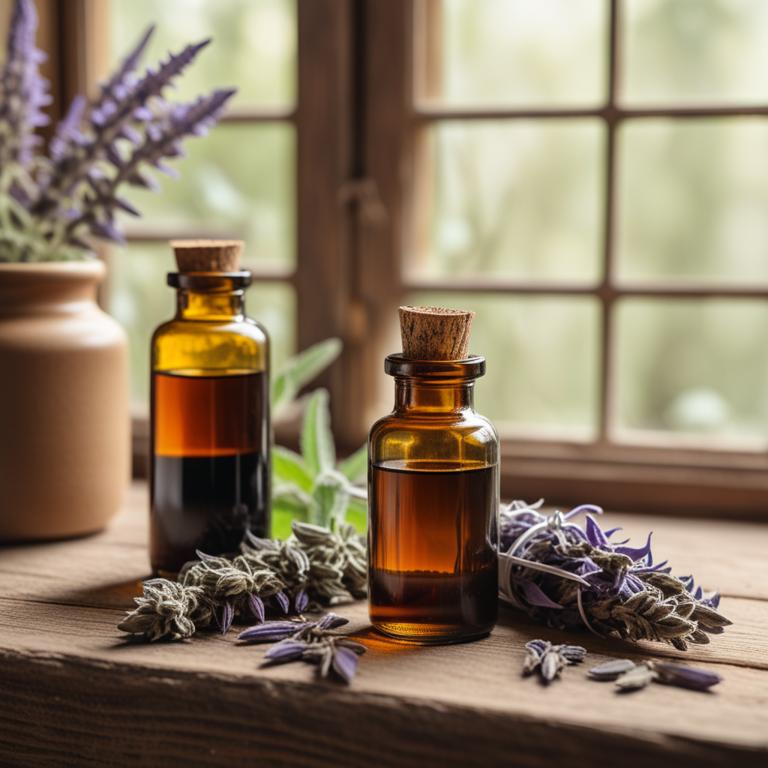
Salvia officinalis tinctures are a natural herbal preparation that has been traditionally used to treat body odor.
The antimicrobial properties and antiseptic qualities of this tincture help to treat body odor by inhibiting the growth of bacteria and fungi that cause odor-causing compounds to form on the skin.
The bioactive constituents, such as thujone, rosmarinic acid, and camphor, in Salvia officinalis tinctures contribute to its ability to reduce body odor by suppressing the production of volatile organic compounds (VOCs) that cause unpleasant odors.
The benefits of using Salvia officinalis tinctures to treat body odor include reduced sweat buildup, improved skin health, and a fresher, cleaner scent.
6. Rosmarinus officinalis tinctures
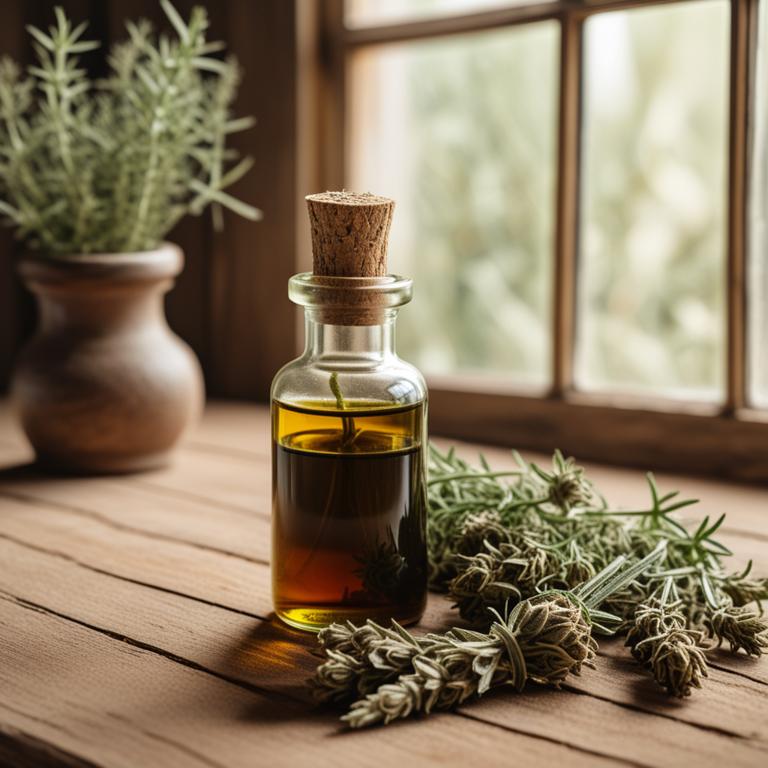
Rosmarinus officinalis tinctures, derived from the leaves of the rosemary plant, have been traditionally used to treat body odor due to their antimicrobial and antiseptic properties.
The bioactive constituents, including carnosic acid, rosmarinic acid, and camphor, help to inhibit the growth of odor-causing bacteria on the skin, thereby reducing body odor.
By reducing bacterial growth and promoting a healthy skin environment, Rosmarinus officinalis tinctures help to eliminate the underlying causes of body odor, providing long-lasting relief.
Regular use of rosemary tinctures also offers additional benefits, including improved digestion and reduced inflammation, contributing to overall well-being and freshness.
7. Syzygium aromaticum tinctures
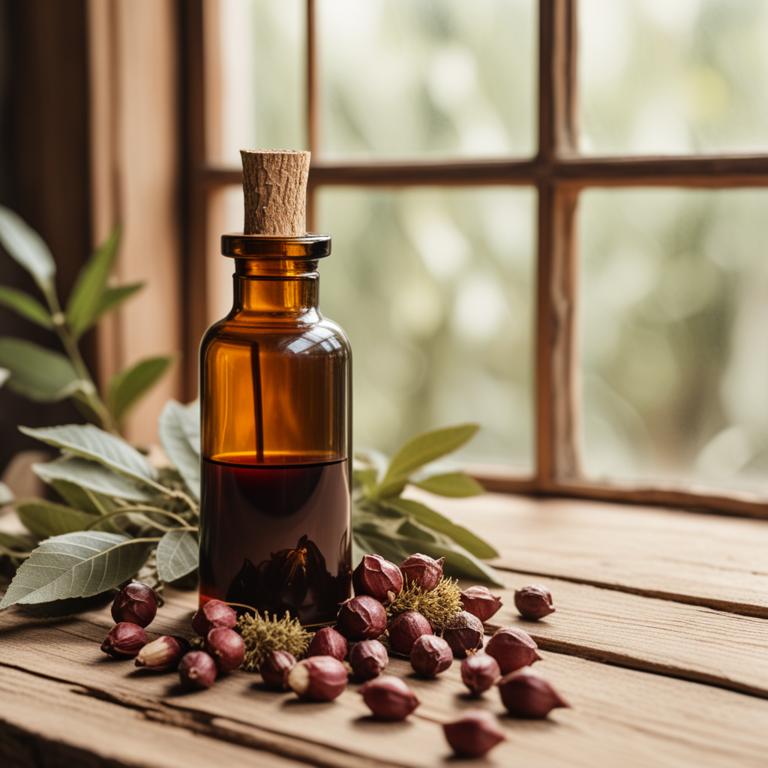
Syzygium aromaticum tinctures have been traditionally used to treat body odor due to their antimicrobial and antifungal properties, which help to eliminate the bacteria and fungi that cause this condition.
The bioactive constituents of Syzygium aromaticum, such as eugenol and caryophyllene, contribute to its ability to inhibit the growth of microorganisms that contribute to body odor.
By reducing the amount of odor-causing bacteria on the skin, Syzygium aromaticum tinctures can help to alleviate the symptoms of body odor and promote a healthier, fresher body.
Regular use of Syzygium aromaticum tinctures has been reported to provide long-term benefits in managing body odor, making it a popular natural remedy for this condition.
Related Study
According to "Journal of ethnopharmacology", Syzygium aromaticum tinctures for body odor may be effective against the Malassezia species, which can cause common infections or exacerbate multiple skin disorders, such as dandruff, due to their documented antimicrobial activities.
8. Thymus serpyllum tinctures
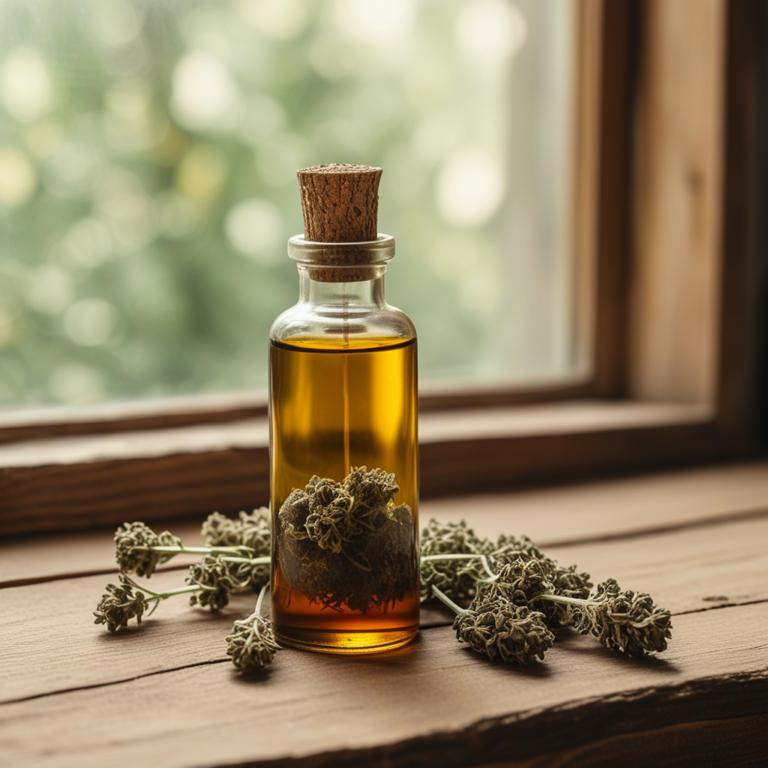
Thymus serpyllum tinctures have been traditionally used to treat body odor, a condition characterized by excessive sweat and unpleasant body smell.
The antimicrobial and antifungal properties of Thymus serpyllum tinctures help to treat this ailment by inhibiting the growth of bacteria and fungi that contribute to the development of body odor.
The bioactive constituents of Thymus serpyllum tinctures, including thymol and carvacrol, exhibit potent antimicrobial activity, making it an effective herbal preparation for addressing body odor issues.
The benefits of using Thymus serpyllum tinctures to treat body odor include reduced sweat odor, improved skin health, and a refreshed, clean feeling.
9. Lavandula angustifolia tinctures

Lavandula angustifolia tinctures have been traditionally used to treat body odor due to their antiseptic, antifungal, and antibacterial properties.
These properties help to reduce the growth of odor-causing bacteria on the skin, thereby alleviating the symptoms of body odor.
The bioactive constituents of Lavandula angustifolia, including linalool and linalyl acetate, have been shown to exhibit antimicrobial activity, which contributes to its effectiveness in treating body odor.
Regular use of Lavandula angustifolia tinctures can provide benefits such as reduced sweat odor, improved skin health, and a refreshing scent, making it a natural and holistic approach to managing body odor.